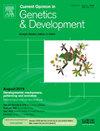Rewiring cancer: 3D genome determinants of cancer hallmarks
IF 3.6
2区 生物学
Q2 CELL BIOLOGY
引用次数: 0
Abstract
In modern cancer biology, Hanahan and Weinberg’s classic depiction of the Hallmarks of Cancer serves as a heuristic for understanding malignant phenotypes [1]. Genetic determinants of these phenotypes promote cancer induction and progression, and these mutations drive current approaches to understanding and treating cancer. Meanwhile, for over a century, pathologists have noted that profound alterations of nuclear structure accompany transformation, integrating these changes into diagnostic classifications (Figure 1). Nevertheless, the relationship of nuclear organization to malignant phenotypes has lagged. Recent advances yield profound insight into the 3D genome’s relationship with cancer phenotypes, suggesting that spatial genome organization influences many, if not all, of these malignant features. Here, we highlight recent discoveries elucidating connections between 3D genome organization and cancer phenotypes.
癌症重新布线:癌症特征的三维基因组决定因素。
在现代癌症生物学中,Hanahan和Weinberg对癌症特征的经典描述为理解恶性表型提供了启发。这些表型的遗传决定因素促进了癌症的诱导和进展,这些突变推动了当前理解和治疗癌症的方法。与此同时,一个多世纪以来,病理学家注意到细胞核结构的深刻改变伴随着转化,并将这些变化纳入诊断分类(图1)。然而,细胞核组织与恶性表型的关系滞后。最近的进展对三维基因组与癌症表型的关系产生了深刻的见解,表明空间基因组组织影响了许多(如果不是全部的话)这些恶性特征。在这里,我们强调最近的发现阐明3D基因组组织和癌症表型之间的联系。
本文章由计算机程序翻译,如有差异,请以英文原文为准。
求助全文
约1分钟内获得全文
求助全文
来源期刊
CiteScore
7.90
自引率
0.00%
发文量
102
审稿时长
1 months
期刊介绍:
Current Opinion in Genetics and Development aims to stimulate scientifically grounded, interdisciplinary, multi-scale debate and exchange of ideas. It contains polished, concise and timely reviews and opinions, with particular emphasis on those articles published in the past two years. In addition to describing recent trends, the authors are encouraged to give their subjective opinion of the topics discussed.
In Current Opinion in Genetics and Development we help the reader by providing in a systematic manner:
1. The views of experts on current advances in their field in a clear and readable form.
2. Evaluations of the most interesting papers, annotated by experts, from the great wealth of original publications.[...]
The subject of Genetics and Development is divided into six themed sections, each of which is reviewed once a year:
• Cancer Genomics
• Genome Architecture and Expression
• Molecular and genetic basis of disease
• Developmental mechanisms, patterning and evolution
• Cell reprogramming, regeneration and repair
• Genetics of Human Origin / Evolutionary genetics (alternate years)

 求助内容:
求助内容: 应助结果提醒方式:
应助结果提醒方式:


